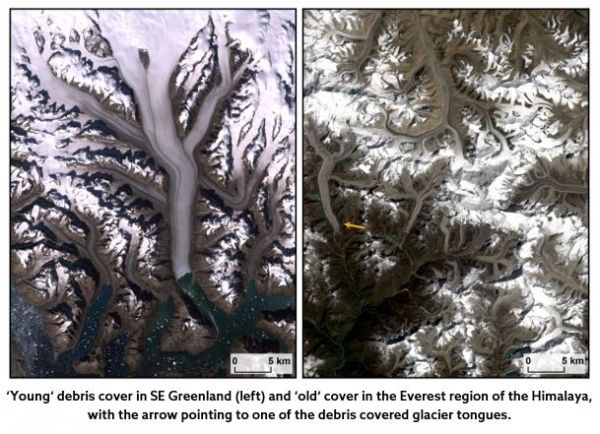A new study which provides a global estimate of rock cover on the Earth’s glaciers has revealed that the expanse of rock debris on glaciers, a factor that has been ignored in models of glacier melt and sea level rise, could be significant.
The Northumbria University study, which has been published in Nature Geoscience this week, is the first to manually verify the rock debris cover on every one of the Earth’s glaciers.
As glaciers shrink, their surrounding mountain slopes become exposed and eroded rock debris slides down and accumulates on glacier surfaces. This debris forms a protective layer that can be many metres thick, reducing the rate at which the ice below melts. Although the effects of this protective cover are known, it has never been carefully mapped until now, and so has not been included in global glacier models.
As well as revealing where rock debris is located on Earth’s glaciers, the researchers also found and corrected key errors within the Randolph Glacier Inventory – a global inventory of glacier outlines on which hundreds of studies are based.
Read more at Northumbria University
Image: ‘Young’ debris cover in SE Greenland (left) and ‘old’ cover in the Everest region of the Himalaya, with the arrow pointing to one of the debris covered glacier tongues. CREDIT: Northumbria University / Swiss Federal Institute for Forest, Snow and Landscape Research


